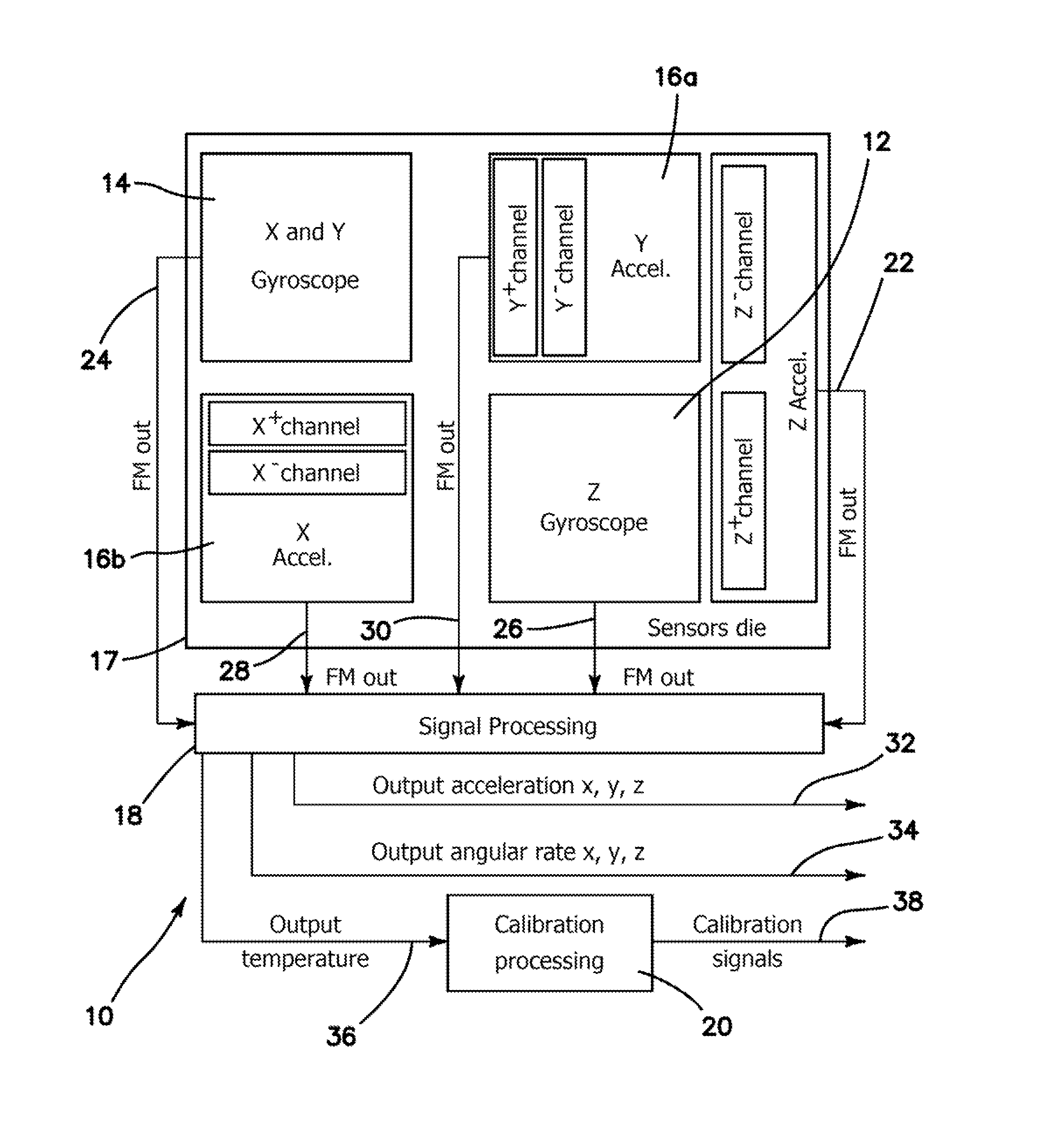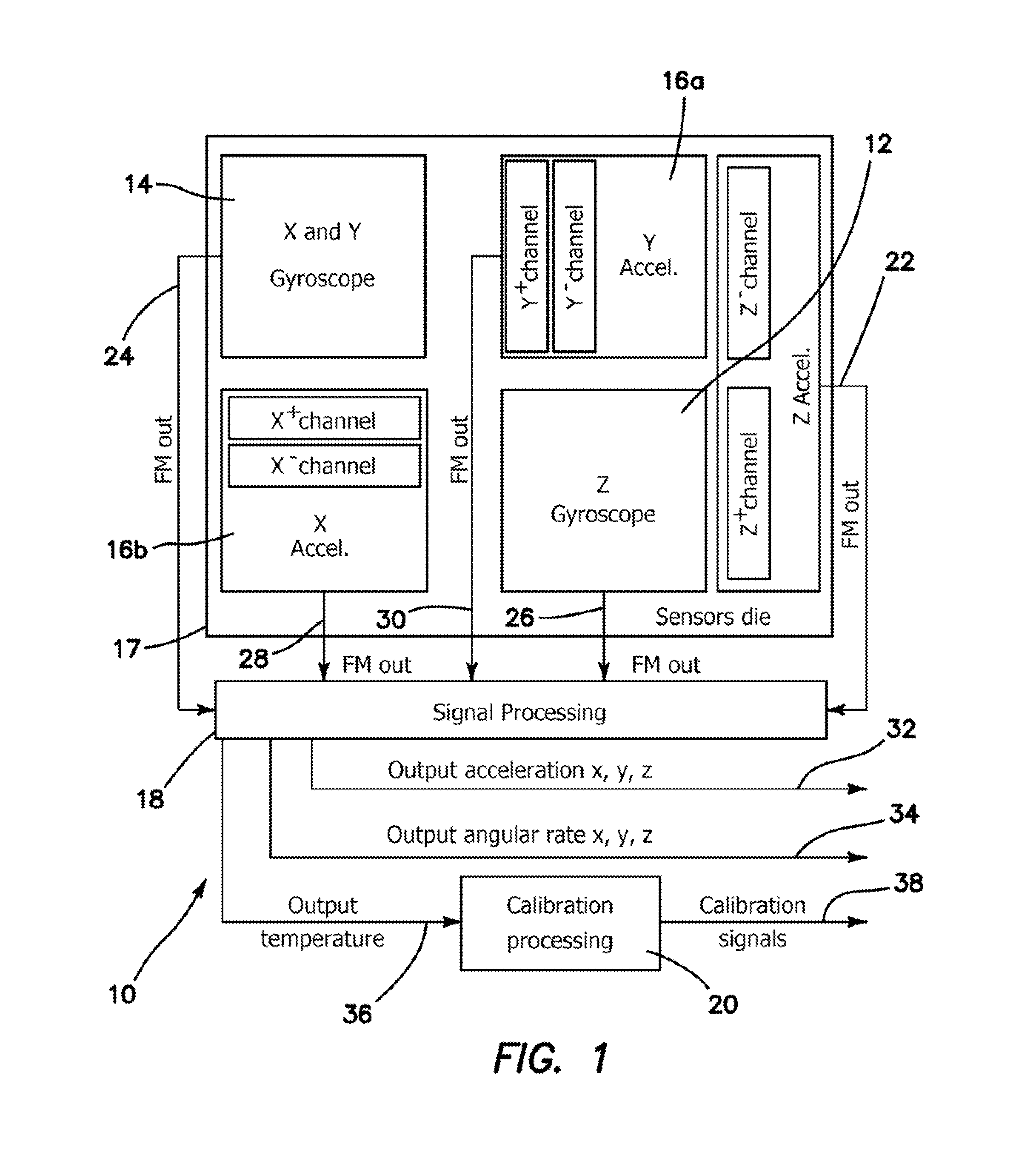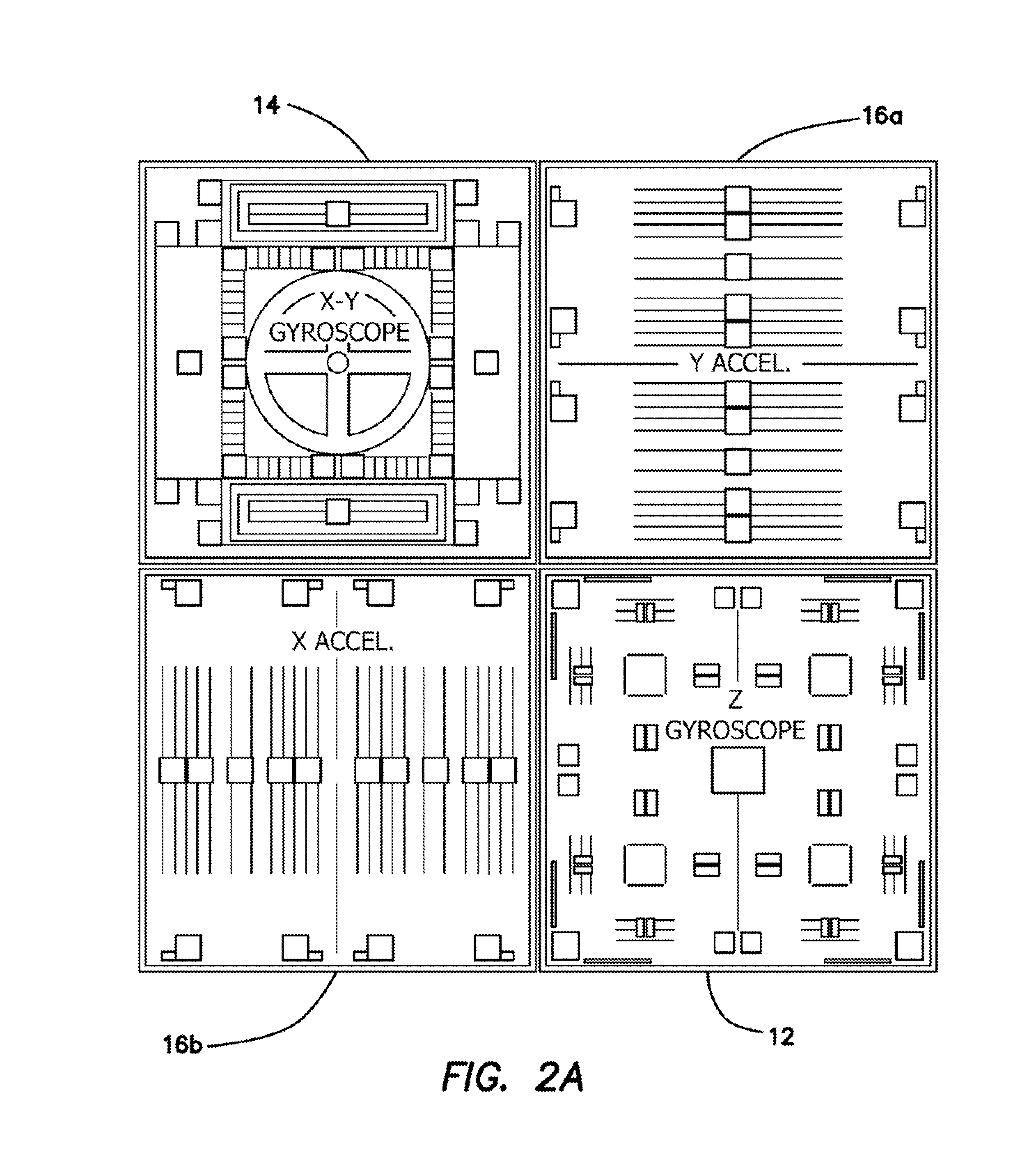Multi-Axis Chip-Scale MEMS Inertial Measurement Unit (IMU) Based on Frequency Modulation
a frequency modulation and inertial measurement technology, applied in the direction of speed/acceleration/shock measurement devices, instruments, surveying and navigation, etc., can solve the problems of not meeting the navigation grade requirements of current mems imus, few systems reaching the tactical grade, and not allowing further miniaturization and cost reduction. , to achieve the effect of wide measurement bandwidth, wide dynamic range, and ultra-high precision
- Summary
- Abstract
- Description
- Claims
- Application Information
AI Technical Summary
Benefits of technology
Problems solved by technology
Method used
Image
Examples
Embodiment Construction
[0046]What is disclosed is the first multi-axis MEMS IMU 10 with an inherently FM-based, quasi-digital architecture and including a method of operation and self-calibration of the same. FIG. 1 is a block diagram of a 3-axis IMU implementation which was realized as single-chip solution as a proof of concept, combining an ultra-high Q-factor z-axis FM gyroscope co-fabricated with two complementary high-resolution FM accelerometers (x and y axis). The illustrated embodiment shows a differential FM accelerometer using two acceleration sensitive tuning fork resonators equipped with negative electrostatic springs. IMU 10 is fabricated on a single die 17 and includes a z-axis MEMS gyroscope 12 to provide a Z+ and Z− channel FM acceleration output 22. Z-axis MEMS gyroscope 12 also provides an angular rate FM output 26. An x and y axis MEMS gyroscope 14 provides an FM angular rate output 24. Die 17 also includes a y MEMS accelerometer 16a with Y+ and Y− channel acceleration outputs provided ...
PUM
 Login to View More
Login to View More Abstract
Description
Claims
Application Information
 Login to View More
Login to View More - R&D
- Intellectual Property
- Life Sciences
- Materials
- Tech Scout
- Unparalleled Data Quality
- Higher Quality Content
- 60% Fewer Hallucinations
Browse by: Latest US Patents, China's latest patents, Technical Efficacy Thesaurus, Application Domain, Technology Topic, Popular Technical Reports.
© 2025 PatSnap. All rights reserved.Legal|Privacy policy|Modern Slavery Act Transparency Statement|Sitemap|About US| Contact US: help@patsnap.com



